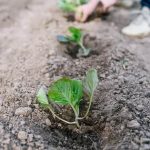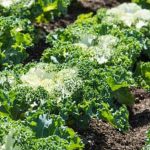Container vegetable gardening is a fantastic way for beginners to dip their toes into the world of gardening, offering a manageable and rewarding experience. Whether you live in an apartment with limited space or simply want to try your hand at growing your own produce, container gardening provides a convenient solution. In this guide, we will explore the essentials of first-time container vegetable gardening, from selecting the right containers to harvesting your homegrown vegetables.
One of the primary benefits of first-time container vegetable gardening is the ability to control your growing environment more easily. With containers, you can optimize factors such as sunlight exposure, soil quality, and drainage to ensure your plants thrive. Additionally, containers allow you to adapt to different living situations – perfect for renters or those with limited outdoor space. By following some basic guidelines and tips, even novice gardeners can successfully cultivate a bountiful harvest.
Not only does container vegetable gardening offer practical benefits like accessibility and flexibility, but it also brings a sense of satisfaction and connection to nature. Tending to your plants, watching them grow, and eventually harvesting fresh vegetables can be incredibly fulfilling.
Moreover, there is something special about enjoying food that you have nurtured from seed to plate. With the right knowledge and preparation, first-time container vegetable gardeners can embark on a journey of learning and enjoyment in cultivating their own green thumb.
Choosing the Right Containers
Container gardening is an excellent way for beginners to dip their toes into the world of growing vegetables. When it comes to choosing the right containers for your plants, there are a few key factors to consider.
The first thing to look at is the size of the container – you want to make sure it’s large enough for the roots of your chosen vegetable to spread out comfortably. Additionally, containers should have drainage holes at the bottom to prevent waterlogging, which can lead to root rot.
Another important consideration when selecting containers for your first time container vegetable gardening venture is the material they are made from. Containers can be made of various materials such as plastic, ceramic, wood, or even fabric. Each material has its pros and cons – plastic containers are lightweight and often less expensive, while ceramic pots are more aesthetically pleasing but heavier. Consider factors like durability, insulation properties, and aesthetics when making your decision.
It’s also crucial to think about mobility when choosing containers for your vegetable garden. If you plan on moving your plants around to chase sunlight or protect them from harsh weather conditions, lightweight containers with handles might be a good choice.
Additionally, consider investing in casters or plant caddies if you have a larger garden with multiple pots that need regular repositioning. Ultimately, the right containers can make a significant difference in the success of your container vegetable gardening experience.
| Key Factors | Considerations |
|---|---|
| Size of Container | Large enough for root growth, drainage holes |
| Material | Plastic, ceramic, wood, fabric – pros and cons |
| Mobility | Consider lightweight containers with handles or casters for easy movement |
Picking the Perfect Location
Container vegetable gardening is an excellent way for beginners to dip their toes into the world of growing their own food. One of the most critical factors for success in this type of gardening is selecting the perfect location for your containers. The ideal spot should receive ample sunlight, usually around 6-8 hours per day, as most vegetable plants thrive in direct sunlight. Be sure to observe your chosen location throughout the day to ensure it meets this requirement.
In addition to sunlight, you’ll want to consider access to water when choosing a spot for your container garden. Vegetables grown in containers can dry out quickly, especially during hot summer days, so having easy access to a water source is crucial. Consider placing your containers near a water spigot or invest in a watering can or hose that can reach your garden easily.
Another important factor when picking the perfect location for your container garden is convenience. Make sure the spot you choose is easily accessible so that you can check on your plants regularly, water them as needed, and harvest vegetables when they are ready. Having your container garden close to your home will also make it easier to incorporate into your daily routine and increase the likelihood of success with your first time container vegetable gardening experience.
| Benefits of Container Vegetable Gardening | Choosing the Perfect Location |
|---|---|
| Easy way for beginners to start growing their own food | Ample sunlight is crucial for plant growth |
| No need for a large outdoor space – can be done on balconies or patios | Access to water source for regular watering |
| Allows for better control over soil quality and pests | Convenience and accessibility are key factors |
Selecting the Right Vegetables
Container vegetable gardening is an excellent way for beginners to dip their toes into the world of gardening. Not only does it require less space and maintenance compared to traditional gardening, but it also offers a convenient way to have fresh produce right at your fingertips. When starting your first time container vegetable garden, it’s essential to select the right vegetables that will thrive in this environment.
To ensure a successful container vegetable garden, here are some vegetables that are well-suited for growing in containers:
- Tomatoes: One of the most popular choices for container gardening, tomatoes can be grown in pots or hanging baskets.
- Peppers: Bell peppers, chili peppers, and other varieties do well in containers with plenty of sunlight.
- Lettuce: Leafy greens like lettuce are perfect for small spaces and can be harvested multiple times throughout the season.
- Cucumbers: Choose compact or bush cucumbers for container gardening, providing support for them to climb if needed.
- Herbs: Herbs like basil, parsley, and mint not only add flavor to your dishes but also thrive in containers both indoors and outdoors.
When selecting vegetables for your container garden, consider the size of the mature plants, their sunlight requirements, and whether they need trellises or supports for proper growth. By choosing the right vegetables for your containers, you’ll set yourself up for a successful and rewarding gardening experience.
Soil and Fertilizer
When embarking on your first time container vegetable gardening adventure, choosing the right soil and fertilizer is crucial for the success of your plants. The quality of the soil will directly impact the growth and health of your vegetables, while fertilizers provide essential nutrients for robust development. Here are some tips to help you select the best soil and fertilizers for your container garden:
- Start with a high-quality potting mix: Opt for a well-draining potting mix specifically formulated for container gardening. Avoid using garden soil, as it may compact in containers, hindering root growth and water drainage.
- Consider adding compost or organic matter: Incorporating compost into your potting mix can enrich the soil with beneficial nutrients and improve its structure. You can also use organic fertilizers to provide long-lasting nourishment for your vegetable plants.
- Choose a balanced fertilizer: Look for a slow-release or water-soluble balanced fertilizer that contains equal amounts of nitrogen, phosphorus, and potassium (N-P-K). This will ensure that your plants receive all the necessary nutrients for healthy growth.
In addition to selecting the right soil and fertilizers, it’s important to monitor the nutrient levels in your container garden regularly. Container plants require more frequent feeding compared to those grown in traditional gardens because nutrients can wash out quickly from the containers when watering. By providing your vegetables with adequate nutrition through proper soil and fertilizers, you’ll set them up for thriving growth and bountiful harvests.
Remember that each vegetable may have specific nutrient requirements, so it’s essential to read up on individual plant needs before applying any additional fertilizers. With proper care and attention to soil health, you’ll be well on your way to enjoying an abundant harvest of fresh, homegrown vegetables from your first time container vegetable garden.
Watering and Sunlight
Container vegetable gardening is a fantastic way for beginners to dip their toes into the world of gardening. One of the key elements to ensure success in this endeavor is providing the right amount of water and sunlight to your plants. Proper watering and sunlight are essential for healthy plant growth, ensuring that your vegetables thrive and produce an abundant harvest.
When it comes to watering your container vegetables, it’s important to strike a balance. Over-watering can lead to root rot and other issues, while under-watering can cause wilting and stunted growth. The best way to determine if your plants need water is by checking the soil moisture level.
Stick your finger about an inch into the soil – if it feels dry, it’s time to water. Ensure that your containers have proper drainage holes to prevent water from pooling at the bottom, which can also lead to root rot.
In addition to watering, sunlight is another critical factor in container vegetable gardening success. Most vegetables require at least 6-8 hours of direct sunlight per day to grow and produce well. When choosing a location for your containers, make sure they will receive adequate sunlight throughout the day.
If you have limited space or live in an area with little natural light, consider supplementing with grow lights to ensure your plants get the light they need to thrive. By paying close attention to watering and sunlight requirements, you can set yourself up for a successful first time container vegetable gardening experience.
Maintenance and Pest Control
Regular Inspections and Cleaning
One key aspect of maintaining a flourishing container vegetable garden is to conduct regular inspections and cleaning. By inspecting your plants on a regular basis, you can catch any pest infestation or disease early on, allowing you to take swift action to prevent further damage.
Additionally, keeping your containers clean from debris and dead leaves can help reduce the risk of pests finding a home in your garden. Make it a habit to check your plants at least once a week for any signs of trouble.
Natural Pest Control Methods
For beginners venturing into their first time container vegetable gardening experience, it’s important to consider natural pest control methods to protect your plants without introducing harmful chemicals. One effective method is companion planting, where certain plants are strategically placed together to repel pests or attract beneficial insects that prey on harmful pests.
For example, planting marigolds near your vegetables can help deter aphids and other common garden pests. Additionally, using ingredients like neem oil or diatomaceous earth can help control pests while being safe for your plants.
Disease Prevention Strategies
In addition to pest control, preventing diseases is crucial for maintaining a healthy container vegetable garden. To minimize the risk of diseases spreading among your plants, make sure to give them enough space for air circulation and avoid overcrowding containers. Watering at the base of the plant instead of overhead can also help prevent fungal diseases.
It’s also essential to remove any infected plant parts immediately to prevent the spread of diseases. By adopting these disease prevention strategies, you can ensure that your first time container vegetable gardening experience is successful and rewarding.
Harvesting and Enjoying Your Homegrown Vegetables
In conclusion, container vegetable gardening is a fantastic way for beginners to dip their toes into the world of gardening. The benefits of this method are numerous, from saving space to having more control over the growing environment. By following the tips provided in this article, even those without a green thumb can successfully grow their own vegetables right at home.
When it comes to harvesting your homegrown vegetables, timing is key. Each type of vegetable has its own optimal harvest time, so it’s essential to do some research on the specific plants you’re growing. Harvesting at the right moment ensures that you get the best flavor and texture from your vegetables, making all your hard work truly pay off.
Not only is harvesting your own vegetables rewarding in terms of taste and satisfaction, but it also promotes a healthier lifestyle by incorporating fresh, organic produce into your diet. Additionally, sharing your bountiful harvest with friends and family can be a wonderful way to spread the joy of gardening and inspire others to try their hand at first-time container vegetable gardening as well.
Frequently Asked Questions
What Do You Put in the Bottom of a Vegetable Container?
To properly prepare the bottom of a vegetable container, it is essential to create adequate drainage. This can be achieved by placing a layer of small rocks or pebbles at the bottom of the container. Ensuring proper drainage will help prevent waterlogging and root rot in your plants.
What Are the Best Vegetables for First Time Gardeners?
For first-time gardeners, it is recommended to start with easy-to-grow vegetables such as lettuce, tomatoes, zucchini, radishes, and green beans. These vegetables are relatively low-maintenance and can thrive in various conditions. Starting with these options can build confidence and experience in gardening.
How Do You Prepare a Container for Planting Vegetables?
Before planting vegetables in a container, it is important to prepare the container properly to set up your plants for success. Start by selecting a suitable container with drainage holes at the bottom. Next, fill the container with high-quality potting mix or soil specifically formulated for containers.
Ensure there is enough space for roots to grow and consider adding organic matter like compost for added nutrients. Before planting seeds or seedlings, water the soil thoroughly to provide a good start for your vegetables’ growth.

If you’re looking to get into vegetable gardening, or are just looking for some tips on how to make your current garden better, then you’ve come to the right place! My name is Ethel and I have been gardening for years. In this blog, I’m going to share with you some of my best tips on how to create a successful vegetable garden.





